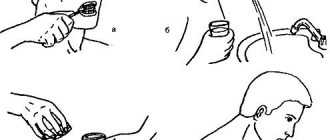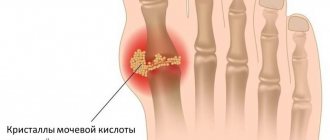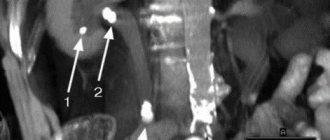Diaskintest is a skin test to determine the presence of tuberculosis and characteristics of the development of the pathological process. Using the test, the active form of the disease in all organs is established, asymptomatic carriage, in which the patient is a carrier of mycobacteria.
Among the advantages of the test are:
- High level of security;
- Does not cause a reaction in healthy and vaccinated people;
- Highly sensitive. All sick and infected persons have an accurate positive result;
- Allows you to determine the activity of the disease and monitor the effectiveness of treatment;
- Shows a negative result after proper therapy.
Why do you need to get the DST vaccine?
The causative agent of the disease is Mycobacterium tuberculosis. Develops against a background of decreased immunity, malnutrition, frequent hypothermia, malnutrition, HIV infection, drug addiction, and nervous hypothermia. Transmitted in several ways:
- Airborne: through communication, sneezing, contact with a patient;
- Household: when using dishes, things, kissing, etc.;
- Through contact with the carrier;
- Food: eating affected food;
- Intrauterine: from mother to child.
In the acute form of tuberculosis, a prolonged and wet cough with sputum production is observed; hyperthermia. The patient sharply loses weight, complains of fatigue, and a general deterioration in health. Performance is lost.
The cough is wet and pronounced. Occurs in the form of frequent attacks, especially in the morning. Often the disease at the initial stage is mistakenly confused with “smoker’s cough”, symptoms of chronic bronchitis.
According to statistics in the CIS countries, approximately 90% of people are carriers of Koch's bacillus. In this case, 5% get sick. The development of tuberculosis depends on the level of immunity. Therefore, the main method of preventing the disease is maintaining a healthy lifestyle. Children are required to be vaccinated; regular samples and tests are carried out, with the help of which it is possible to establish in the early stages. Diaskintest is a solution that helps identify the disease in the early stages.
Expert opinion
Author:
Alexander Vyacheslavovich Averyanov
Pulmonologist, Doctor of Medical Sciences, Professor, doctor of the highest qualification category
According to statistics, 90% of the population are carriers of the Koch bacillus, the causative agent of tuberculosis. However, the incidence is recorded in only 5%. The disease develops against the background of immunodeficiency, so it is important to lead a healthy lifestyle and engage in prevention.
Diaskintest allows you to diagnose tuberculosis. The method differs from the classical Mantoux in its accuracy. The effectiveness of Diaskintest is 90%. For comparison, Mantoux's accuracy ranges from 50 to 70%. The Yusupov Hospital uses Diaskintest to diagnose tuberculosis. The method is also effective for preventive purposes. Results are assessed after 72 hours. Diaskintest is well tolerated and rarely causes allergic reactions. Even if individual intolerance to a component of the test occurs, undesirable reactions disappear after 2–3 days.
Diaskintest has proven itself on the positive side with most domestic doctors. Diagnostics is being actively introduced into medical institutions. High efficiency allows you to prescribe correct treatment. This is important, since tuberculosis is characterized by a progressive course and high mortality without adequate therapy.
Advantages of diagnosing tuberculosis with Diaskintest in children:
- has the highest sensitivity (98 - 100%)
- has the highest specificity (90 - 100%)
- greater safety and higher accuracy compared to the Mantoux test
- higher specificity than the imported allergen T-Spot
- accurate diagnosis of infection occurring in a latent form
- contains two antigens present in virulent strains of Mycobacterium tuberculosis and absent in the BCG vaccine strain
- When using Diaskintest, allergic reactions practically do not occur
How the analysis works
Diaskintest is used to perform an intradermal test in all age groups for the purpose of:
- Determination of the phase of development of tuberculosis;
- Identification of individuals at high risk of developing the open form;
- Diagnosing the form of the disease;
- Treatment activity assessments, etc.
A test through the Diaskintest test is carried out in the following cases:
- Persons who have received a referral to an anti-tuberculosis institution for examination for the development of the tuberculosis process;
- Persons at high risk, taking into account epidemiological, medical and social factors.
One dose of the drug contains recombinant protein CFP10-ESAT6 - 0.2 μg, sodium phosphate. Existing synthetic antigens, after being introduced under the skin, cause an allergic reaction. This form of manifestation indicates the presence of an active phase in which tuberculosis develops or infection occurs without the formation of pathology. Additional components: sodium chloride, potassium phosphate, polysorbate 80, phenol.
A little about tuberculosis
Tuberculosis has been and remains a dangerous infectious disease. Koch's bacillus, or Mycobacterium tuberculosis, the causative agent of the disease, is so aggressive and resistant to the external environment that it can remain viable for several months in dry sputum, on various surfaces.
Mycobacterium is easily transmitted by airborne droplets (coughing, sneezing) and through household contact. Penetrating into the body, the microbe affects various organ systems, but most often these are the chest organs. However, not in all cases tuberculosis is active - approximately a third of the planet’s inhabitants are “owners” of a latent form of the disease, that is, the microbe is present in their body, but the immune system successfully copes with it. Such people do not suffer from tuberculosis (the possibility of activation of the pathology is no more than 10%) and do not pose a danger to others. If the immune system is weakened (HIV, diabetes, chronic disorders, poor nutrition, stress, and so on), the likelihood of developing the disease increases sharply.
ON A NOTE! According to statistics, the incidence of tuberculosis in Russia has decreased in recent years. However, many experts are skeptical about such data, rightly believing that not all cases of infection and mortality were taken into account. Since the times of the USSR, there has been an opinion that only socially disadvantaged people can get tuberculosis. In fact, mycobacterium does not select a person by status. In addition, this attitude towards the disease leads to a situation where “prosperous” people, having fallen ill, try to hide this fact from others, including doctors and relatives.
Another reason for the lack of statistical recording is the stereotype associated with the symptoms of tuberculosis. It is believed that the patient must certainly choke from coughing, spit phlegm with blood, and so on. But such symptoms indicate an already advanced stage, when the disease is difficult to treat. And at the early stage of infection, a person may only feel fatigue, loss of strength, a slight increase in temperature in the evening and other signs that easily fall into the category of “you just need to rest.” As a result, there is no need to see a doctor, tuberculosis progresses and spreads.
Treatment of the disease is long-term and requires taking medications from different groups for several months. In the absence of timely and adequate therapy, the result is death. In addition, tuberculosis is dangerous due to its complications on the brain, bone tissue and others.
Difference from Mantoux?
The main difference between Diaskintest and the classic Mantoux is the accuracy of the data. When performing Mantoux, the accuracy of the result ranges from 50 to 70%. Tests have shown that the intradermal test is 90% accurate.
In addition, each test has a different composition, which contains different active ingredients. In Mantoux, the main active element is tuberculin, contained in tuberculosis bacteria. However, this protein is present not only in tuberculosis, but also in microorganisms similar to the disease. Diaskintest contains as its main element a protein that is found only in this disease. Therefore, the reaction to the tests is different. With a positive Mantoux test, there is a high risk of the presence of bacteria that are not the causative agents of tuberculosis.
If you receive a positive result after Diaskintest, you can be completely sure of infection with tuberculosis, which means you can apply the correct treatment in a timely manner.
Thus, the method shows more accurate results in detecting a dangerous disease, applying treatment to avoid serious complications. examination practice shows that Diaskintest is effective at any, even the earliest stages of tuberculosis
Compound
It is worth immediately noting that the drug does not contain either live tuberculosis bacteria or their metabolic products.
The composition contains only antigens of synthetic origin, which, when they enter the human body, are recognized by the immune system as pathogens of the disease.
The diagnostic preparation also contains auxiliary components: saline solution, phenol, polysorbate, potassium phosphate and sodium. All these substances are included in the composition in small quantities and do not have a negative effect on the body.
Indications and contraindications for the test
It is used for conducting intradermal testing of people of different age groups, as well as for assessing the activity of the infectious process. Using the test, it is possible to identify individuals belonging to a group at high risk of infection and developing the active phase.
It is used for the differential diagnosis of tuberculosis, as well as in the fight against infectious and post-vaccination allergies. Often prescribed by doctors to confirm the quality of treatment.
Diaskintest does not cause a delayed-type hypersensitivity reaction, which often occurs during BCG vaccination.
Along with the indication, there are a number of cases in which it is not recommended to conduct a test to detect tuberculosis. These include:
- The presence of acute and chronic infectious diseases. The exception is suspected tuberculosis;
- Exacerbation of somatic diseases;
- Spread of skin infection;
- Allergic reaction;
- Epilepsy.
In children's institutions, where quarantine is often established, the test is carried out after it is lifted. Sometimes when used, a number of side effects occur, which manifests itself in the form of malaise, headache, and increased body temperature. Do not use together with preventive vaccinations. It is carried out after their completion, at the end of the 30 day period.
Possible side effects
For most, the test process is asymptomatic.
Headaches, general weakness, sleep disturbances, and increased body temperature may occur. Individuals with altered reactivity experience allergic reactions. Considering the possibility of developing immediate allergic reactions (anaphylactic shock, Quincke's edema, urticaria) in particularly sensitive individuals, vaccinated persons must be provided with medical supervision for 30 minutes.
Come get vaccinated at VIRILIS. A full range of vaccines for children and adults, family vaccinations - at a special price!
How is DST made?
Diaskintest vaccination is carried out only as prescribed by a doctor for children and adults only by a medical worker with permission to carry out intradermal tests.
Diaskintest is administered strictly intradermally. For this purpose, special tuberculin syringes and thin short needles are used. Before using the drug, be sure to check the date and expiration date. After opening, the bottle with the drug is stored for no more than two hours.
How many times is Diaskintest done per year? Healthy children aged 8 to 18 years are prescribed once a year during a mass examination. In the absence of BCG vaccination, it must be done twice a year. For adults, it is prescribed once every 12 months for preventive purposes.
In the presence of diabetes mellitus, lung diseases, peptic ulcers of the stomach, lungs and kidneys, adults and children are treated twice a year at intervals of six months. It is allowed to test if the Mantoux test is positive.
In all other cases, the procedure is prescribed only as prescribed by a doctor. The following rules apply:
- If a negative result is obtained, repeated testing is scheduled after two months;
- If there is a positive answer, it is entered at any time after any period of time as necessary;
- With vaccination or transmission of infectious diseases - no earlier than a month.
How to help your child feel comfortable during the test
The test goes better when the child is calm and not afraid. Diaskintest is performed on children over 7 years old; however, even at that age, children may still be afraid of vaccinations or injections. To calm your child, try the following:
- Talk softly to your child.
- Be calm, confident, smile.
- Explain to your child why the test is needed, what its benefits are, and why it is safe.
- After vaccination, be sure to support your child with words, tell him how great he is and how proud you are of him.
Evaluation of Diaskintest results
After Diaskintest, the test results are assessed by a nurse 72 hours after the vaccine is administered. Measurement of the transverse size of hyperemia and infiltrate using a ruler in millimeters is taken into account. Hyperemia is taken into account only in the absence of infiltration.
The response to the sample is perceived in the following cases:
- Negative Diaskintest score. Complete absence of infiltration and hyperemia, as well as with a “puncture reaction” of up to 2 mm;
- Doubtful. Hyperemia without infiltration was detected;
- Positive. An infiltrate of any size was detected.
The detected positive reaction varies in degree of manifestation:
- Weak. The size is up to 5 mm;
- Moderate. Infiltrate no more than 14 mm;
- Hyperergic Diaskintest results. A volume of more than 15 mm is observed. Also when vesiculonecrotic changes, lymphangitis, lymphadenitis are detected.
If the result is negative, there is practically no swelling. A mark from the injection, a hematoma, may be noticeable. The presence of a bruise makes assessment difficult because there is virtually no redness visible. In controversial cases, a repeat test is scheduled after two months.
If a positive Diaskintest interpretation is detected, an examination for the presence of tuberculosis is prescribed. Accompanied by a strong inflammatory reaction. Allergies and other reactions to the administration of the drug are observed immediately and disappear after 48-72 hours.
Diaskintest interpretation of results may be negative in a patient with tuberculosis due to immunopathological disorders in the body caused by tuberculosis disorders of the body. Also in the early stages of the tuberculosis process, in the presence of concomitant diseases accompanied by an immunodeficiency state.
Diaskintest: what is it (Sergiev Posad)
Diaskintest - what is it?
Sometimes people wonder what kind of vaccine Diaskintest is.
But this is not a vaccination, but a test sample. The Diaskin test shows the body's response to tuberculosis in inactive or active forms. A positive result on this test is an absolute indication for starting chemotherapy to prevent the disease from becoming active. Diaskin test
is an immunological test in which protein allergens (antigens) are introduced into the skin to detect the body’s immune (interferon) response. If the answer is yes, then the human immune system is familiar with these protein allergens. This indicates that the person is either infected or is in an active stage of the disease.
How is Diaskintest done?
The test for tuberculosis is carried out in the traditional way like all other tests.
Diaskintest is done on any hand in the forearm area (the space between the wrist and elbow). If a person is right-handed, they try to place the test on the left hand (and vice versa, for a left-handed person - on the right), as it is less active, in order to minimize possible external mechanical irritation. But there are cases when the Mantoux and Diaskin tests are performed simultaneously on different hands. In general, the main thing is that the person does not scratch the injection site and does not accidentally provoke an irritating reaction.
The test for tuberculosis is administered intradermally with a special tuberculin syringe with a thin needle.
Why is Diaskintest vaccinated?
Since many are still confident that the Diaskin test is a vaccination, and today there is an increasing irrational negative attitude towards vaccinations, for example, parents often wonder whether or not to do the Diaskin test for their children. There cannot be any alternative here, and discussions about the pros and cons are beyond common sense.
Tuberculosis is an infection that develops covertly and asymptomatically for a long time. If you have had even a single contact with someone with a latent form of this disease, you may also get sick.
Tuberculosis, manifested by typical symptoms - fever, cough, weight loss, etc., is a difficult disease to treat. If you start treating it in the latent phase, then the cure is always one hundred percent. It is impossible to detect the disease at this stage without performing allergen tests.
How often can I do it?
Diaskintest is done as often as required by the recommendations of the Ministry of Health: the test is mandatory for all children from 8 to 17 years old once a year.
When deciding how often a diaskintest can be done for a child or an adult, they are guided by the following standards:
After a negative test, the next one can be done after 2 months; after any vaccination - in a month; after suffering acute infectious diseases - in a month.
For those who are registered with a phthisiatrician at an anti-tuberculosis dispensary, a control test is performed once every 3–6 months.
Diaskintest can be done from the age of 1 year upon receiving a positive Mantoux test.
Preparation
No preparation is required for the Diaskintest analysis. A necessary condition is the absence of any infectious diseases for a month before and at the time of the test.
Evaluation of results
Diaskintest is checked on the 3rd day after placement.
How to evaluate the result:
- Negative (normal);
- Doubtful (false positive);
- Positive.
Normal for children and adults
The norm according to Diaskintest is complete absence of reaction: no redness, no swelling (papules).
Reaction by day
The reaction to Diaskintest by day is not significant. Redness may occur on both the first and second days. This is not a very good sign, but a false positive reaction is quite likely.
The first reaction may appear 6 hours after the injection.
The result of diaskintest is the body’s immune response. The intensity of this response is influenced by the general immune status. For a person who is not in an immunosuppressed state, the response to an introduced allergen in the presence of a latent form of tuberculosis will be dynamic. Redness and the appearance of an inflammatory reaction in the form of a papule are possible already on the first day after the Diaskin test. Over the course of 72 hours, the reaction will increase, showing maximum results in both children and adults after 3 days. Further, the reaction will begin to fade, after which it will not be possible to make a correct assessment.
Negative result
Of the visible signs, the following are considered normal (i.e. the Diaskin test is negative):
- injection mark;
- possible 1-2 mm bruise at the injection site;
- a colorless compaction with a diameter of no more than 1 cm at the site of the sample (“button”, “lemon peel”).
Thus, the Diaskin test should not show redness or papule.
False positive result
The test may be false positive or questionable. This is how the presence of redness without the formation of a papule is classified.
In case of a false-positive Diaskintest, the person should be referred for further consultation to an anti-tuberculosis dispensary, where he undergoes additional tests, fluorography, and also undergoes a repeat Diaskin test after 2 months.
Positive result
If a person has a positive diaskintest result - that is, an inflammatory papule of any size is present - this means that such a person is infected with the tuberculosis bacillus.
In an adult
With a positive diaskintest in an adult, the size of the papule does not matter; the fact of its presence is important. For classification purposes, the conventional sizes of swelling at the injection site were established:
- up to 5 mm. - weak;
- up to 9 mm. - moderate;
- more than 10 mm. - expressed.
The more pathogens there are in the body, the larger the inflammatory process at the injection site.
What to do if the diaskintest is positive: treatment and registration at a dispensary is necessary.
The child has
A logical question for any parent: what to do next if the diaskintest shows a positive result. Additional tests will be required to determine whether the disease is latent or active.
Complications and side effects
Diaskintest does not cause any harm or complications. The bacterial fragments it contains are not harmful to either a child or an adult.
Very rarely, the side effect of Diaskintest can manifest itself in the form of symptoms of general intoxication:
- temperature increase;
- malaise;
- headache;
This is a normal immune reaction to the administration of a protein drug.
Hyperergic reaction
A hyperergic reaction to Diaskintest is a positive result with the formation of a large papule more than 15 mm, irritation and inflammation of the tissue around it.
Bruise at the injection site
A slight bruise after diaskintest is not dangerous and is considered a normal side effect of the procedure.
Contraindications
Diaskintest has contraindications:
- any acute disease or in the acute phase;
- skin diseases;
- epilepsy;
- allergic conditions;
- vaccination (including BCG vaccination) within 1 month. before testing.
Can this be done if you have a cold?
Colds, ARVI, cough and runny nose are acute infectious diseases. The Diaskin test cannot be performed with these symptoms.
Allergy to Diaskintest
The drug contains a foreign protein. Therefore, it itself is an allergen. Diaskintest can cause allergies and allergic reactions. Allergic conditions are a contraindication for testing.
Contraindications for children
In addition to the above, there are no other contraindications, including for children.
What can and cannot be done?
What not to do after vaccination with Diaskintest:
- apply detergents, cosmetics and perfumes to the sample site;
- apply any medications to the injection site;
- rub and scratch the injection site;
- cover the sample with a plaster or wrap it with a bandage.
Otherwise, you may get redness on the first day and have an incorrect assessment of the results.
Is it possible to wet your hand?
It is not prohibited to wet your hand after the diaskintest.
Is it possible to wash after Diaskintest?
Can. But you should avoid getting detergents on the sample site.
Is it possible to eat sweets?
There are no restrictions that the Diaskin test imposes in this regard.
What should you not eat during diaskintest?
There are no dietary restrictions. You can eat the foods you normally eat.
Conclusion
Diaskintest can make mistakes, like any medical test technique. The sensitivity of this method is about 80%. Accuracy - almost 100%. The Diaskintest tuberculin test is an order of magnitude more accurate than the outdated Mantoux test. Mainly due to the fact that it does not show a positive reaction in individuals with acquired anti-tuberculosis immunity.
Therefore, Diaskintest tuberculin diagnostics is the most reliable and safe way to find out whether a person has tuberculosis.
The cost of the procedure is 1000 rubles. Pediatrician appointment 950 rub.
Reasons for a questionable and hyperergic reaction to the test
The response to the test can be positive, hyperergic and doubtful. Such processes indicate the absence of the disease and its pathogens in the body. The explanation for this is as follows:
- The reaction to Diaskintest occurred due to an infection in the body that did not cause corresponding symptoms. Other pathologies that contribute to the body’s reaction. Sometimes symptoms occur due to recent infection;
- Infection of the venue. This is especially true for children;
- Having an allergy with an inadequate reaction to an allergen;
- Somatic and autoimmune diseases.
There may be other reasons for such a reaction to the test. People predisposed to allergies are often given antihistamines before the test.
To avoid a false positive reaction, it is necessary to strictly adhere to contraindications. Adults are prohibited from drinking alcohol before and after the administration of Diaskintest. The breakdown products of ethyl alcohol with the reaction of the drug can cause redness of the injection site, which will be perceived as a positive Diaskintest reaction.
It is not recommended to wet the sample site, public baths, saunas, beaches or swimming pools. Such measures may cause a backlash.
Contraindications to DST
Like any other diagnostic test, Diaskintest has a number of contraindications, namely:
- Skin diseases accompanied by widespread rashes.
- Acute infectious and inflammatory diseases.
- Severe chronic pathology in the stage of decompensation.
- Hyperthermia of unknown origin.
- Epilepsy.
- A number of mental illnesses.
- Hypersensitivity to substances included in the drug.
The list of contraindications can be increased by a specialist, based on the collected analysis and objective examination.
Photos of results
You can independently determine the test result without waiting for an examination by a nurse using a photo with the results of the test.
Diaskintest photo performed on a child has a positive result. The size of the infiltrate is more than 5 mm.
With a comparative result, the infiltrate size is 2-4 mm.
The photo provided indicates a negative result. With it, there may be a trace of the injection, the infiltrate is completely absent.
Recommendations after testing
After conducting a diagnostic study until the results are monitored, it is recommended:
- Avoid intense workouts.
- Avoid prolonged contact with water.
- Limit walking in low temperatures.
- Do not expose the injection site to direct sunlight.
- Avoid mechanical external influences (do not scratch, touch, or rub the area where the drug is administered).
DST test at Yusupov Hospital
Where can I do Diaskintest? This test is carried out in public and private tuberculosis dispensaries. It is carried out strictly once or twice a year in accordance with the doctor’s prescription. Children are administered in kindergartens and schools in accordance with the vaccination plan.
The average price for Diaskintest in Moscow is 1,400 rubles. carried out after visiting a phthisiatrician or pediatrician.
Where to do it in Moscow? This service is available at the Yusupov Hospital clinic. Conducted by professionals. Clients are given the opportunity to undergo a preliminary consultation, and, upon receiving a positive result, undergo a course of therapy with additional techniques for a speedy recovery. Diaskintest can be done at an inexpensive price.
Mantoux – vaccination or test?
Vaccination against tuberculosis - BCG. The vaccine is named after the names of the scientists who created it in capital letters: Bacillus Calmette-Guérin (BCG). The vaccine contains live but inactivated bovine mycobacteria. The first vaccination is given to newborns in the maternity hospital, usually on the 4th day of the child’s life.
Many people do not understand why vaccination is done so early, where can a baby encounter this infection? In fact, the situation with tuberculosis in our country is unfavorable, and not all tuberculosis patients know about their disease. They don’t even suspect that they are contagious and lead a normal life. TB doctors know that the earlier a child is infected, the greater the likelihood of the infection turning into a disease. And the sooner he is vaccinated, the faster the baby will develop immunity and he will be protected. There is even a grotesque poem on this topic, the author of which, unfortunately, is unknown:
“When they come to ask for permission for a child to have BCG done,
And this will be after the birth, but before discharge, Don’t allow it - there are no tuberculosis patients in your family, So that you don’t get infected from others - do your shopping on the Internet, Walk away from all passers-by, visit your girlfriends don't drive, Let your husband quit his job. Warn your relatives that you don’t want to see them anymore for ten years. Kindergarten and school are flying by and warm greetings to the university. Let the child grow up at home, under his mother’s skirt - All wild, unlearned, without life goals or ideas. Old age will creep up unnoticed. He won’t give you water - he’ll go out into the street to get it and get lost there. Alas."
So, in response to vaccination, the body produces protective antibodies - immunity is formed. Immune memory weakens over time, so revaccination is required (repeated administration of the vaccine at seven and 14 years). BCG does not provide 100% protection against tuberculosis, but in case of infection it significantly reduces the risk of complications and death, promotes a milder course of the disease and a faster recovery.
Mantoux allows you to:
- determine the body’s sensitivity to mycobacteria;
- identify the hidden form of the disease;
- assess the risk of developing the disease in the future.
In other words, using the test, you can not only detect tuberculosis in a timely manner, but also predict the immune response to infection.
What's included
The drug contains a complex mixture of mycobacterial proteins - tuberculin. It is pre-cleaned and treated with special solutions. It does not pose a danger to human health and is not a cause of tuberculosis.
FROM THE HISTORY. Tuberculin was discovered by the German microbiologist R. Koch in 1890 for the treatment of tuberculosis. The crude composition led to numerous and severe toxic effects, recovery did not occur, so it was perceived critically by society. But as tuberculin was further used in animals, the diagnostic properties of the drug were discovered. In 1907, a scientist from Austria, K. Pirke, proposed using tuberculin diagnostics for people using a skin test. And in 1908, C. Mantoux (France) developed a method of intradermal administration, which is used in diagnostic practice to this day. The purified preparation was adopted by WHO as an international standard in 1952.







